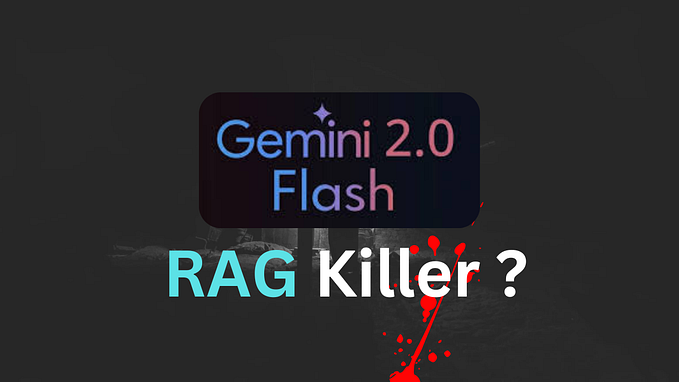Monitoring Health Conditions Through Data From Wearables: Applications and Challenges

Over the years, people have been generating an increasing volume of health-related data. Traditionally, this data type is produced in citizen-centered health systems where information about patients is collected. Some common sources are patient’s health status record, video/audio exams, known diseases, regular use medicines, etc. Every time a person goes through medical services either elective appointments or urgency/emergency events it produces more data improving the accuracy of tracking each patient’s health. A straightforward advantage of this model is the construction of individualized knowledge that gives support for a diversity of preventive front lines related to diagnosis, treatment, and rehabilitation of the population. On the other hand, a critical drawback is the intrinsic dependency of people’s presence in health centers. If a person does not get in touch with those services, no consistent data is generated.
The expansion in the use of wearable devices represents a new perspective for people’s health monitoring. The telemedicine broadening scope is also contributing to this scenario especially with the adoption of the “continuity of care” concept. The introduction of those technological solutions into medical preventive actions has been causing an even more explosion in the data collected volume. This is the reason big data fundamentals are being explored in that context. Considering the usability of wearable devices, Lymberis explains that “a smart wearable personal system should be lightweight and low power consumption, of reasonable price with a capacity of operation by total unskilled persons, with embedded processing and alarming capability.” The majority of the wearable gadgets available on the marketplace meet that description. Besides, while some of them provide only one function, others count with multiple integrated operations such as fitness tracking, health monitoring, and message display. This is the case of the wrist-worn BASIS watch that tracks heart rate and gives information about health and wellness. Other types of gadgets are smart belts, smart clothing, activity tracker, smart glasses, ingestible, etc.

Health wearable devices
The relevance of health wearable devices was underlined by the classification proposed by Dian et al. The authors identified four clusters of wearable Internet of Things (IoT) applications embracing the most important researched content. Health wearable devices constitute one of those groups. The other three ones are (i) activity recognition and sports, (ii) tracking and localization, and (iii) safety. The working of those devices is based on three steps. The first one is the health-related data capture carried out by sensors. Dian et al. have also been classified sensors according to the type of signs they monitor:
- Vital signs monitoring: pulse, respiratory rate, and body temperature.
- Non-vital signs monitoring: blood pressure and blood oxygen.
In the second step, wearable devices execute a preliminary computation before sending the data over the Internet — the third step — to a posterior additional analysis. An alternative flow is found in many devices capable to connect to smartphones. In those cases, there is an interaction between the wearable device and a mobile application. In general, such applications make it possible to visualize data exchanged by the heath device. More specialized apps are also able to offer suggestions concerning the user’s health. A common component in scenarios involving intermediate operations of smartphones is access to cloud-based services. Data collected by wearables are transmitted to those services that store, process, and run some analysis over them.
Health wearable devices can also be grouped into two main categories: health treatment and rehabilitation, and health monitoring. The first one contemplates gadgets that aid the improvement of physical and mental patient capacities. The work published by Nave and Postolache describes an innovative example of this type of device. The authors propose a new smart walker for helping people with some kind of mobility restriction. It is part of a physiotherapy system that monitoring a patient in real-time. The smart walker architecture is centered on a microcontroller that interfaces with both a cloud service via Wi-Fi or 3G/4G protocols and a mobile application via Bluetooth for when the Internet is unavailable. Through those two interfaces, the walker sends data of patient movements that make it possible for physiotherapists to conduct an analysis of the information and to adapt the exercises accordingly. The cloud environment stores all data in a MySQL database and a web application accesses the data offering another way to visualize them. Since data are held in a cloud, the mobile app can run a synchronization when the Internet signal is available.

Another example of a breakthrough wearable device developed with the purpose of helping people’s treatment and rehabilitation is the smart wearable armband idealized by Yang et al. This device does not use any connection to cloud services as the other one previously described. Rather, the smart armband does the recording, pre-processing, and transmitting signals to another smart training equipment via wireless. This second component runs offline trained machine learning algorithms. Once the correct movements are recognized, the training equipment sends the outcome to a robot hand function embedded into the wearable armband. This module is responsible for mimic the user’s gesture in real-time. According to the authors, the accuracy rate of the identified gestures made it possible to translate the user’s hand movement intention into precise manual commands.

The second category of health wearable devices is turned to monitoring operations. Recent works leveraged the development of wearables for detecting anomalous behaviors in some physiological body functions. A useful sample is a wearable device to measure heartbeat using IoT proposed by Jayanth et al. According to the authors, the system aims to help “the user’s family and the user’s doctor to monitor the user’s health efficiently and alert them in case of emergencies.” The main idea of the gadget is to identify heartbeat thresholds — minimum and maximum — by the moment it is powered on. Thereafter, every time an abnormal cardiacal rate is detected, the system searches by the nearest available Wi-Fi and connects to it. Once the connection is established, it notifies the family members and a doctor about the anomalous rate by sending an e-mail. Parallelly, the wearable triggers a vibrator to also warn the user.

The concerns related to people’s cardiac health have been leveraging the development of many other wearable devices. This is also the case of the multisensory smart IoT-based cyber-human system designed by Majumder et al. The system is classified as a multisensor since it collects data from the pulse and temperature of the user. The wearable hardware is responsible for this capture and it sends all information to an Android application. Such communication takes place through a Bluetooth network that minimizes power consumption. The mobile application processes the data sent by the device and plots both the electrocardiogram signal and body temperature in real-time. The identification of abnormal patterns is based on some parameters defined previously, like heart rate. Ever the data collected by the wearable achieve certain thresholds, the systems transmit a warning to the subject in the form of a message or a vibration alert. The Android application does not require the user to keep any record about his/her health since it immediately warns the user about any detected abnormality.

Other types of wearable devices are causing disrupting advancements in the health monitoring frontiers. They are designed to collect data from inside users’ bodies. This is the reason they are classified as ingestible devices. Sargunam and Anusha described a smart drug capable to generate information about blood level glucose using infrared radiation. This technique corresponds to a non-invasive way to help diabetic patients to monitor their blood glucose levels. The radiation is capture by a mobile medical application on a smartphone. Since “the glucose concentration in the blood depends on the intensity of the wavelength-specific to the radiation”, the mobile application can monitor it using a wireless channel (Sargunam and Anusha). In this same trend, Yoshida et al. designed “a tablet-shaped ingestible core-body temperature sensor based on gastric acid power generation for daily health care.” Using a custom integrated circuit, they prototyped a tablet of dimensions 10 x 8 mm (diameter x height). The device was capable of coding, modulating, and transmitting data about body temperature according to the gastric acid power. The data were successfully received by an antenna far from 20 cm and correctly decoded.
Health wearable challenges
Wearable technology faces peculiar challenges caused by trail its evolution has been following. Wei pointed out that “unlike tablets and smartphones, which evolved from the PC era and whose features and form factors are more standardized, the wearable market is much more diversified since it is driven by many different market segments.” Health wearables are equally impacted by this reality. An indicative of this intrinsic trouble was mentioned by Lymberis. He stated that “there is currently no smart wearable system in the marketing integrating, multiple sensors, intelligent processing and alarm to support medical decision and interact easily at any moment with the health provider.” Considering this scenario, some common challenges for wearable devices were reported in the specialized literature.
Data resolution of sensors is one of those challenges. Typically, wearable devices must be small, comfortable for use, and economics considering power consumption. These requirements have a direct impact on the resolution reached by them, especially when compared against other types of devices. In the case of health wearables whose focus is, in general, on helping debilitated people, the quality of data visualization can create an even more complex tradeoff with the cited requirements. Correlated to the problem involving data resolution, Dian et al. pointed out power consumption and wearability as other two challenges. Health wearable devices must operate for extended periods of time since they act, essentially, monitoring users’ information or supporting rehabilitation. Then, it is expected a minimum interaction for replacing batteries. Wu et al. explored a mechanism based on a flexible solar energy harvester and they achieved an autonomously of 24 hours with a multiple sensor health wearable device. About the wearability, Dian et al. explained that “the tradeoff between the complexity of the computations and the weight of the wearable is one of the major challenges.” Complementing this question, Wei added that the design of such devices must be taken into account as “consumers will be more likely to adopt fashionable wearables.”
Safety and security are also addressed in the literature as typical challenges for health wearables devices. Safety is related to the level of radiofrequency radiation over the user wearing such devices. According to Vahidnia and Dian, this is due to the proximity of antennas used by cellular IoT (CIoT) solutions. Security of data manipulated by those devices is another source of concern. The minimalist project commonly implemented in those gadgets does not favor the adoption of strong security policies. The same is observed about the introduction of data protection based on encryption — it is put apart in detriment of “keeping the complexity of the system as low as possible” (Dian et al.) This reality puts wearables in a position of devices easily hackable.
The lack of proper regulation has been considered as another obstacle for the wider use of wearables solutions. Although health devices are not plenty affected by this question, other areas are deeply impacted. An example is the possibility to employ wearables in sports which is blocked by the absence of specific rules. Referencing security aspects again, data privacy on wearable connections is the seventh challenge commonly addressed. The threat stem from the fact wearables normally communicates using a broadcast mode. This facilitates unauthorized devices to capture users’ private data. From the perspective of health data analysis, the largest data volume produced by wearable devices is stored either in isolated systems or in multiple cloud solutions. Such a reality constitutes a hard hindrance for employing sophisticated analysis based on business intelligence. As a consequence, users lose much value information because of the lack of feedback based on consolidated data. Wei pinpointed this issue stating that “while the end-users still benefit from the results of the data collected, the greater impact will be felt when these data are anonymously combined with other data for intelligent contextual processing.”
Complementing what must be handled so that healthy wearable applications reach a higher level of user satisfaction, Lymberis lists other four features. Firstly, he advocates patients should be able to enter data into the wearable device. Second, it is necessary to have a link between the device and health providers. Third, Lymberis defends the development of “special medical algorithms” for integrating medical data received from multiple sensors. Fourth, the existence of a validation plan where smart wearable applications would be submitted to complex clinical scenarios.
Health wearable devices and Big data
According to Chen et al., “sustainable health monitoring has a close relationship with health big data.” The authors present two arguments endorsing such a statement. The former one is related to data collection. An effective health monitoring is strongly dependent on continuous and long-term data capturing. The latter one is about the existence of cloud intelligence for supporting health big data analytics. Exploring correctly the volume of health data generated from the population is of great importance for the optimization of health services either public or private. The strategy presented by Chen et al. is using body area networks (BAN) as a mechanism for collecting a massive amount of health data. In association with these collectors, applications for big data processing must be available on a cloud environment and operating over captured data.

Demonstrating the feasibility of this architecture, smart clothing for sustainable health monitoring is described by the authors mentioned above. The wearable device is composed of multiple sensors: “pulse sensor, body temperature sensor, electrocardiography sensor, myocardial sensor, blood oxygen sensor, electroencephalographic sensor, and batteries.”. This is the first component of what was called a Mobile Health Cloud Software System. All collected data is sent to a mobile application (the second component of the system) that shows the user’s health status in real-time. This communication carries out through a low power consumption channel. The third element is a cloud service the receives data forwarded by the smartphone application. The authors explain an API for big data analytics was employed. It offers functionalities for data statistics and machine learning libraries that assist in the prediction of trends of users’ health. Specifically, they used Hadoop and Spark technologies for batch processing and Storm for streaming processing. For the machine learning algorithms, they used the implementations available in Spark MLlib and Mathout libraries. Three web applications were developed over this infrastructure: one for Health monitoring, another for Emotional Solace, and another one for Human-computer interaction.
All potential of big data produced by health wearable devices can be utterly explored through data integration. This is the purpose of the semantic big data platform presented by Mezghani et al. The core of the work is to offer wearable knowledge as a service (KaaS) in healthcare based on the concept of ontology. As stated by the authors, the proposed ontology is “designed to deal with the heterogeneity of wearable data to ensure semantic interoperability and to allow creating more accurate knowledge about the patient.” All concepts captured by the ontology were mapped to classes representing the wearable device’s domain. As an example, a “Parameter” generic class was defined for indicating the monitored data nature. Some sub-classes specialized from it are “Glucose”, “Blood Pressure”, and “Heart Rate”. The authors validate the strategy applying the developed ontology to a scenario of diabetic patients. An endpoint for retrieving and querying the semantic knowledge was made available over the SPARQL technology.
Conclusion
Significant advancements have been observed in the topic of wearable devices. This is creating unlimited opportunities for exploring such a technology in many different scenarios. From the perspective of health wearable solutions, an analogous trending is identified. Nevertheless, the variety of approaches and strategies involving the proposal of new applications have been creating several challenges. In particular, the thorough use of the massive amount of data collected by wearables is facing a critical hindrance related to the interoperability. Therefore, innovative contributions can be proposed toward a better big data exploration turned to improving medical services and patient’s health.










